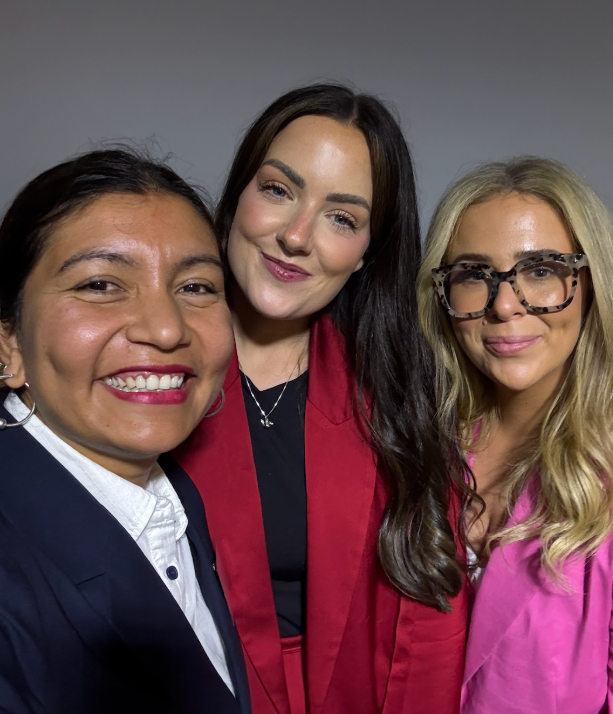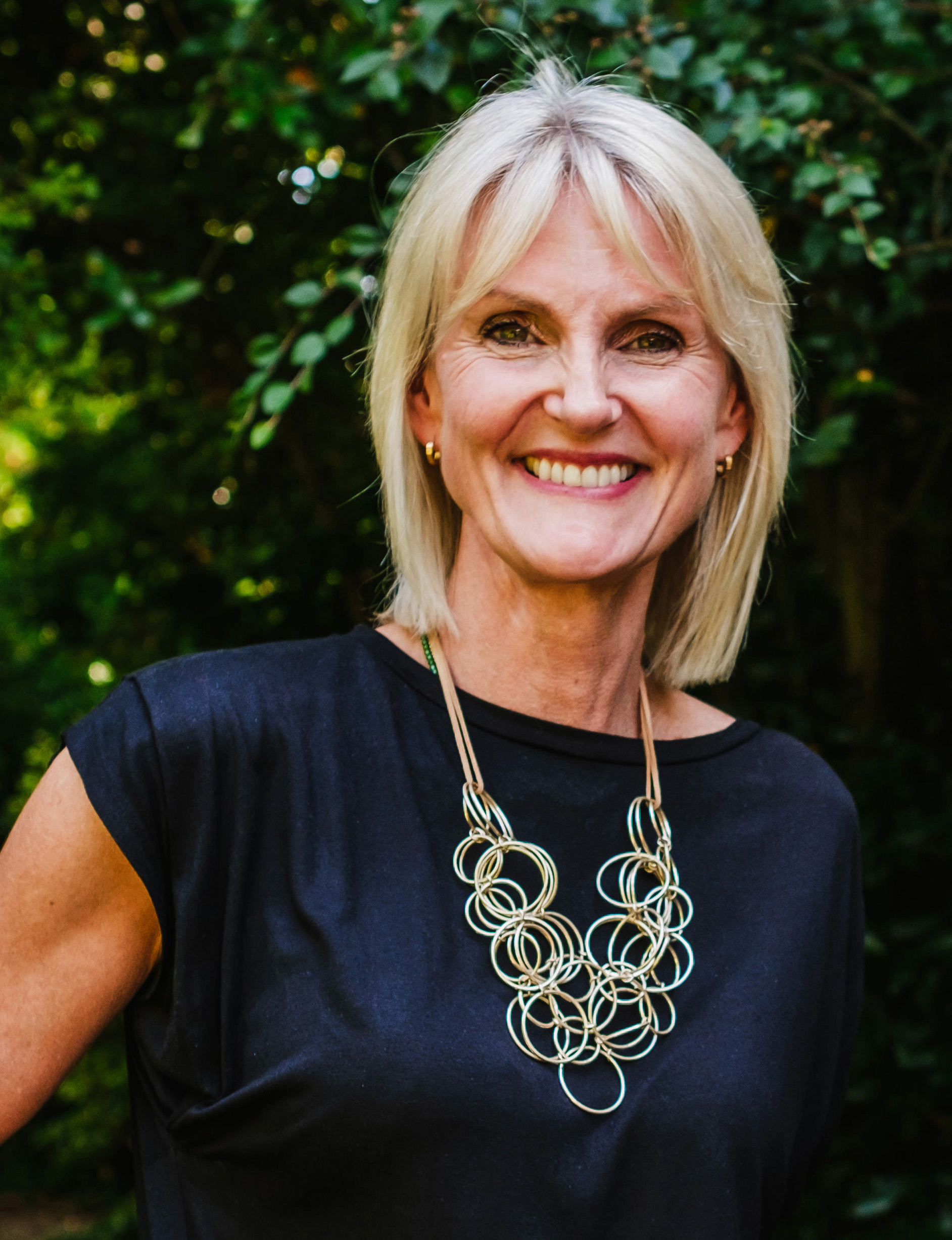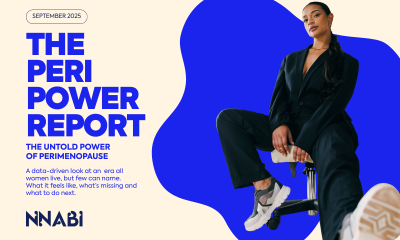Opinion
“Let the activists keep beating the drum around female health inequalities”
By Nicola Finn, associate director at OggaDoon

For decades medical research has been based on data from the male body, but we now know that women’s bodies respond in different ways to drugs and disease.
The research and application gap in healthcare is starting to be recognised and thankfully, the landscape is changing. After all women account for 50 per cent of the global population.
We are going to witness a massive explosion in female health solutions over the next five years. Femtech is predicted to grow at around 15 per cent CAGR, with solutions around mental health, ovarian health, menstrual health and menopause health – to name a few.
More female founders who connect and understand the different health challenges women face are starting businesses to help fill the female health gap in different ways. However, this is not for the faint of heart as the female founders must overcome other barriers such as the bias in capital funding, access to business loans and support for childcare to help free up women’s time.
In the UK, there is a widening funding gap between male-founded and female-founded companies. In 2020, just 2.3 per cent of VC funding went to women-led start-ups. This fell to 1.7 per cent in 2021.
There is additional research conducted by Extended Ventures which also spotlighted the huge investment gap facing diverse founders over the past decade, according to race, gender and educational background, with all-ethnic teams and female entrepreneurs receiving just a fraction of available funding versus all-white teams and male founders. The finding of baked-in bias holds true across all funding stages, per the findings.
Lack of diversity across the capital landscape – angel, venture capital (VC) or private equity (PE) – is no secret. At present, it is a male-dominated space globally.
In 2019 women comprise 30 per cent of venture capital personnel – a small increase from 27 per cent in 2017. Whilst this is encouraging and implies more representation, it still lags behind the average of UK working professionals.
All groups of humans have similar biases, naturally gravitating to people and scenarios that they can personally relate to. This extends to bias around investment decisions, intentional or not. But we need more female investors to be in these positions, as they can personally understand the impact of innovations, specifically targeting female health.
After years of male investors ignoring the female health space, it is finally being recognised as a hotbed for investment due to its predicted growth.
Thankfully, more women are coming into the female health investment industry and more funds are also headed by female investors.
This is needed to drive and ensure inclusivity and unbiased access to the industry and will need historic investment for innovation and collaboration.
In order to build towards the brave new world that prioritises individual female needs in healthcare, there needs to be a movement. Not just front-line activists championing and fighting for equality in female health, but also activist angels, VCs and PEs, providing funding support to visionary founders.
Right now, it is a critical time to keep taking those meaningful steps to bridge the gender health gap. With that, here are some of the UK femtech founders bridging the gender health gap:
Sarah Bolt, founder of Forth has always been part of the movement to highlight and bridge the female gender data and health inequality gap. Forth’s mission is to empower women to become experts on their own body through scientific knowledge and understanding. Historically, women’s bodies were deemed too complicated for clinical trials due to the complexities of their hormone network. This has resulted in women reacting differently to drugs and often misdiagnosed as they do not present with the same symptoms as men.
It was only six years ago that the National Institutes of Health required medical investigators to consider sex as a biological variable. But there is still a long way to go in closing the gender data gap in health.
Forth’s contribution to closing this gap in data is their ground-breaking solution MyFORM™, an advanced female hormone blood test that addresses the lack of clinical insight from current single day hormone blood tests. The single-day tests assume every woman has an average length cycle of 28 days and offer little in the way of personalisation.
MyFORM™ uses a combination of blood analysis, advanced mathematical modelling and endocrinology expertise to scientifically map how a woman’s hormones are fluctuating across their entire menstrual cycle rather than a single day.
With two blood tests taken on day 14 and day 21, the test is able to predict the woman’s own cycle length, creating charts of her four key female hormones across her menstrual cycle, as well as providing personalised ranges for each hormone.
Forth has also developed a unique way to assess a woman’s ovarian health. The Forth Ovarian Response Metric (FORM) takes the results from the blood tests to provide a score on how well a woman’s ovaries are responding to her control hormones. A score above 75 indicates a healthy hormone network. This is particularly useful for women entering perimenopause when their ovaries begin to become less responsive.
The product is designed for women who are experiencing natural menstrual cycles and not using any hormonal treatments such as the pill, Mirena coil or hormone replacement therapy (HRT). It is particularly useful for:
- Women who want to check for hormone imbalance
- Women in their 40s who want to understand if the symptoms they are experiencing are due to perimenopause
- To identify or manage an existing hormone related condition
- Women who consider starting a family
- Exercisers, athletes and dancers who want to perform to their personal best throughout their cycle and ensure their hormones have not been compromised by their training load and fuelling strategies
- Women whose menstrual cycles have recently resumed following recovery from RED-S – relative energy deficiency in sport – discontinuation of hormonal contraception or in the postnatal period.
The highly accurate, personalised results are based on eight hormone measurements, which are translated through AI and delivered on the Forth app. This offers scientific data and actionable insights as hormones are intrinsically linked to a woman’s wellbeing and have an important role to play not only in fertility but in heart health, bone health and the nervous system.
Dr Chen Mao Davies started LatchAid after facing her own struggles with breastfeeding, pain and subsequent depression. She realised that mothers needed maternal support fit for the 21st century in an interactive way.
With the pandemic currently paralysing the predominantly face-to-face support model in place, her app is more necessary now than ever.
LatchAid supports breastfeeding mums and their families through interactive 3D technology, artificial intelligence, virtual peer support groups and live healthcare specialists to combat problems experienced with the latching technique. The app prides itself on being inherently accessible and democratic, empowering women everywhere, regardless of their economic or environmental circumstances.
As well as positive health outcomes for mothers and babies, breastfeeding offers social, economic, and environmental benefits. The UK, however, has the lowest breastfeeding rate in the world. 90 per cent of women give up breastfeeding before they want to because of pain, health issues or lack of support. Unsuccessful breastfeeding also costs society around US$1B per day globally.
LatchAid is an app that utilises 3D interactive technology to help mothers learn breastfeeding skills intuitively from 3D avatars. It offers virtual peer support groups to connect mothers to a close-knit peer-to-peer support network and an AI-powered virtual supporter chatbot to provide users with personalised expertise and companionship 24/7.
Elvie is a women’s healthcare company providing products which take women’s tech out of the dark ages. Tania Boler started the business after working on women’s health policy for global NGOs and the United Nations.
She believes that the release of health products targeting a female audience must go alongside the breaking down of societal stigmatisation of women’s health.
One such product is the sleek, innovative breast pump – the smallest and lightest wearable electric one on the market. It is a silent, wire-free, fully electric device that fits subtly into a nursing bra, ensuring new mothers can pump whilst moving around comfortably.
The pump connects to a mobile app which releases a notification when the bottles are filled. The app can also be used to adjust the suction, monitor pumping history, monitor real-time milk levels and pause and start pumping. The product also includes bra adjusters to ensure less pressure on the breast.
Another product by Elvie is the pelvic floor trainer. Now available on the NHS, this product connects to the Elvie app and encourages training with fun games for five minutes, three times a week.
The trainer is fully waterproof, rechargeable and covered with medical-grade silicone and it is safe to use with an IUD and coil. The app encourages use with four different skill levels and six different exercise types including strength and lift.
Kim Palmer founded the women’s mental health app Clementine in 2017 which uses hypnotherapy to lower stress levels and build confidence. She created Clementine after suffering herself from panic attacks during pregnancy. The app has both a free and a subscription-based version with sleep sessions, confidence and anti-anxiety courses as well as mantras.
Deborah Brock founded Nua Fertility following the challenges she had through her own fertility journey. Following her own successful pregnancy through optimising diet, she started researching the connection between the gut microbiome and reproductive health. After three years of research, Deborah developed two fertility supplements – one for men and one for women – that focus on the microbiome to optimise fertility health.
Nua fertility supplements, have a microbiome focus and are designed to support the nutritional needs of men and women when trying to conceive. The company’s NuaBiome Women supplements combine fertility-supporting vitamins and minerals with a blend of strains of good bacteria to promote healthy conception, egg health, and foetal development.
The friendly bacteria offer three significant benefits: absorption of essential fertility vitamins and nutrients, strengthening the immune system and reducing inflammation in the body.
All these female founders have fought to gain funding for their propositions and succeeded despite the obstacles due to the baked-in bias and lack of diversity across the business capital arena.
However, more female investors need to be appointed as they can personally understand the impact of female health tech innovations.
Let the activists keep beating the drum around female health inequalities. As we continue to make these meaningful steps to bridge the gender health gap we can remember that necessity is the mother of all invention.
News
Listening to pain: What eight women taught me about the state of women’s health in the UK

By Ruby Raut, founder & CEO, WUKA
It’s Ruby here, founder of WUKA and, like many of you, someone who’s been dismissed, doubted, and left waiting far too long when it comes to menstrual health.
Last week, I spoke at an event hosted by the Menstrual Health Project. It wasn’t just another panel or pitch session; it was a wake-up call.
The room was filled with GPs, pharmacists, educators, innovators, and women who have lived the daily reality of conditions like endometriosis, PCOS, PMDD, and premature ovarian insufficiency.
We weren’t there to celebrate solutions. We were there to listen. And what we heard broke us open.
The Stories Behind the Statistics
I walked out of that room with one page of notes — not data, not theory, but pain in ink.
The stories were raw and repetitive. Women told us of:
- 14 years of seeking help and getting none.
- 3 decades of living in pain.
- Being laughed at for wanting to come off contraception.
- Being told to “just go on the pill.”
- Waiting for a laparoscopy since 2015, and still waiting in 2025.
- Being asked to gain weight to get a period or lose weight to manage PCOS.
- Being offered pregnancy as a “solution.”
- Losing jobs because of endometriosis.
This is not an isolated list of frustrations. It’s a mirror reflecting the state of women’s health in the UK today.
Behind every statistic, there’s a woman who has rearranged her life around pain, missed promotions, cancelled plans, and lost trust in her own body.

The System Is Failing Us, and We Know It
Hearing these stories, I couldn’t help but think of it like a leaking roof.
You notice the drip, you report it, but you’re told it’s nothing serious, to just wait it out.
Days turn into months, months into years. By the time someone finally takes a proper look, the ceiling has collapsed.
That’s what living with an untreated women’s health condition feels like, small symptoms dismissed until they become impossible to ignore. That’s what our healthcare system is doing to women.
We don’t have a lack of data, we have a lack of listening.
When women describe pain, the system translates it into exaggeration. When they ask for options, they get the same recycled advice: “Go on the pill.”
The medical model still treats menstruation as a niche, not a vital sign.
And that’s why listening matters. Because until we treat lived experience as evidence, we’ll keep designing systems that ignore reality.
Learning from Lived Experience
As founders, practitioners, and advocates, we often talk about innovation, new tech, better diagnostics, smarter apps. But innovation without empathy is just noise.
Listening to eight women share their stories of endometriosis, PCOS, and PMDD reminded me of something fundamental: we can’t fix what we refuse to feel.
It takes courage to speak about periods, pain, infertility, and loss in a room full of professionals.
Yet these women did, not because they wanted sympathy, but because they wanted change.
Their words carried a collective message: “We don’t need to be fixed, we need to be heard.”
The Change We Need
So, what would change actually look like?
- Menstrual health education in medical schools.
Not as a module, but as a mainstream subject. Every GP, nurse, and specialist should understand menstrual health the way they understand blood pressure. - Inclusive menopause and menstrual support, for all ages, all bodies.
Menstrual and menopausal health should not be separate conversations. Hormonal health spans a lifetime. - Accessible care at every level.
Support should start at the local pharmacy, not five years into a diagnosis journey. Pharmacists and primary care teams can be the first line of empathy and intervention. - Private and public health insurance that covers menstrual conditions.
No woman should have to choose between financial stability and pain management. - Policy change that protects and respects women’s health.
We need national recognition that menstrual health is not a luxury — it’s a basic human right.
What Listening Really Means
Listening is not passive. It’s radical.
It means staying in the discomfort of someone else’s pain long enough to see the system that caused it. It means asking, not assuming. It means holding space before we offer solutions.
The Menstrual Health Project event reminded me that we can’t rely on numbers alone. Data gives us proof. Stories give us purpose. And when you combine both, that’s when transformation begins.

Why WUKA Cares
At WUKA, we started with period underwear, but what we’re really building is period equity.
Every conversation, campaign, and product we create is rooted in one belief: women deserve better.
Better care. Better education. Better respect.
Because menstrual health is not a side issue. It’s a social justice issue. It’s about the right to live without shame, without silence, and without suffering that’s dismissed as “normal.”
If you’re someone living with any of this, endometriosis, PCOS, PMDD, or anything that makes you feel unseen, I see you. You are not alone. You deserve better, and we will keep fighting for you.
Let’s listen louder. Let’s care deeper. Let’s make menstrual health mainstream.
With you always,
Ruby x
Founder & CEO, WUKA
P.S. Check out the incredible work of the Menstrual Health Project. They’re not just raising awareness, they’re rebuilding the narrative.
Pregnancy
Why gestational diabetes underdiagnosis is a women’s health crisis

By James Jackson, CEO at Digostics
Gestational diabetes (GDM) is one of the most under-recognised challenges in maternity care today.
Despite affecting around one in five pregnancies in the UK, GDM remains a blind spot in policy and practice, with devastating consequences for women and their children.
New research continues to expose the scale of the problem.
A recent NIHR-funded study published in Diabetic Medicine found that standard NHS testing methods miss over 50 per cent of cases.
Put simply: thousands of women each year go undiagnosed, untreated, and exposed to avoidable risks.
For a condition we know how to diagnose and manage, this represents a serious failure in women’s healthcare.
The human cost of missed diagnosis
When gestational diabetes is not picked up, the consequences are immediate and long-term.
During pregnancy, women face higher risks of preeclampsia, larger babies, emergency C-sections, and stillbirth. Babies are more likely to need neonatal intensive care due to breathing difficulties or low blood sugar.
The risks don’t end at birth.
Mothers who have had GDM are up to 50 per cent more likely to develop type 2 diabetes within 5–10 years. Their children also face an increased lifetime risk of obesity and diabetes.
These outcomes are not rare, nor are they inevitable. They are the product of a testing system that is not fit for purpose.
An unequal system
Current UK pathways rely on risk-factor–based screening rather than universal testing.

James Jackson
This already puts women at a disadvantage compared with countries such as Spain, Italy, and many others, where all pregnant women are routinely screened.
But even within this narrower approach, the NHS faces a further problem: in-clinic oral glucose tolerance tests (OGTTs), used to test for GDM, are prone to delays in blood sample processing, leading to false negatives.
Research shows that when samples are processed correctly diagnoses increase from 9 per cent to 22 per cent — more than double.
The burden of this diagnostic failure falls hardest on women from disadvantaged backgrounds.
Attending early-morning, hospital-based tests is more difficult for women juggling shift work, childcare, or long travel times.
Women from ethnic minority groups, who already face higher rates of maternal complications, are also more likely to be missed. In this way, testing failures are not just a clinical problem but a driver of health inequalities.
The case for innovation
This is where innovation can play a transformative role.
We have seen in other areas of healthcare — from remote monitoring to home blood pressure checks — how new approaches can increase accuracy, improve access, and reduce inequalities.
Gestational diabetes testing should be no different. Technologies such as at-home oral glucose tolerance tests (OGTTs) are designed to meet the same clinical standards as hospital testing, while overcoming the practical barriers of travel, fasting, and sample degradation.
By enabling women to test from home, results can be processed immediately and shared directly with care teams, reducing missed cases and ensuring timely diagnosis.
Early work with NHS Trusts has already shown that this model not only identifies more cases but also improves access for diverse patient groups, including those typically underserved.
From evidence to action
Despite clear data, progress has been slow. Part of the challenge is that more accurate testing uncovers more cases — and more cases mean more workload for already stretched maternity services.
But failing to diagnose does not make the problem go away; it only delays care and worsens outcomes.
In the long run, undiagnosed gestational diabetes costs the NHS more through emergency interventions, neonatal intensive care, later-life type 2 diabetes, and the ongoing workload and cost pressures this creates for primary care.
The evidence is clear. Now it must translate into policy. That means:
- Recognising underdiagnosis as a patient safety issue on par with other maternity scandals.
- Guaranteeing that all women offered testing receive accurate, reliable results, rather than being failed by flawed processes.
- Supporting innovation that improves accuracy and equity, whether in the clinic or at home.
- Embedding the patient voice in service design, especially from women in disadvantaged and minority communities most affected by current failures.
A call to prioritise women’s health
Gestational diabetes is not a niche concern; it is a mainstream women’s health issue with lifelong consequences.
Every undiagnosed case represents not just a missed number, but a mother at risk of preeclampsia or birth trauma, a baby at risk of intensive care, or a family facing preventable illness later in life.
As maternity services undergo yet another review, it is striking that the diagnostic gap in GDM remains so little discussed.
We cannot claim to be serious about women’s health while ignoring one of the most widespread and preventable sources of harm in pregnancy.
Innovation has a role to play — but innovation must be matched by policy will.
If we are to modernise maternity care, we must start by ensuring that every woman has access to accurate, timely, and equitable testing for gestational diabetes.
Because every mother deserves certainty. And every baby deserves the best start in life.
Opinion
Understanding inflammaging and how preventative health data could help lessen its impact

By Dominique Kent, CEO, Bluecrest
As women, we spend much of our lives juggling, I know this from my own experience.
Running a business, raising a family, caring for parents as they get older, the list is endless. Somewhere in the mix, our own health slips down the priority list.
That is why the idea of inflammaging resonates so strongly with me.
It is a quiet, creeping process in the body: low-level inflammation that builds up over time and accelerates ageing.
Unlike a sprained ankle or a winter flu, you cannot feel it happening.
Yet it’s there, silently increasing the risk of conditions that affect so many women in later life such as heart disease, osteoporosis and dementia.
My background before Bluecrest was in the care sector where I saw first-hand what happens when people live longer but not necessarily well.
Too many spent their final years dealing with pain, frailty and loss of independence.
It shaped my belief that the goal for us all should not just be about lifespan but healthspan: the years we live in good health, able to do the things we enjoy and remain independent.
Inflammaging is a direct and silent threat to this, so it’s something that needs to be addressed.
We as women face some particular challenges here. Hormonal changes during menopause remove a natural buffer against inflammation. Autoimmune conditions, which are often inflammatory, are far more common in women.
There are pressures outside of our biologies too, which often fall more heavily on women: stress, trauma, poor sleep, carrying the invisible load of family responsibilities.
All of these add to the inflammatory burden.
The danger is that inflammaging is invisible, you don’t wake up one day and feel it.
Instead it builds, and its impact often only shows when something serious has developed. This is what makes it so risky.
We already know that women’s health issues are often picked up late, misdiagnosed or brushed aside. Add a hidden process like inflammaging into the mix and you see why prevention is so important.
That focus on prevention is what drew me to Bluecrest.

Dominique Kent
The NHS has made prevention a key part of its long-term plan, and rightly so. If we can spot risks earlier, through small and regular interventions, we can act earlier. That is good for individuals and for the health system.
Inflammaging links directly to so many of the chronic conditions that we see in the headlines, the ones that put the heaviest strain on the NHS, so tackling it at source makes sense.
At Bluecrest, I see how empowering it can be when women come for a health check.
Often it is the first time in years they have put themselves at the top of the list, rather than convincing their husbands or parents to get checked out.
The results are not always perfect, but even when they show areas of concern, women tell me they feel in control.
They leave with a plan, and with knowledge which can be a huge turning point.
I also think about this in the context of business.
Midlife is often when women are at the peak of their careers, yet it is also when health issues start to appear. If hidden risks like inflammaging go unaddressed, we lose women from the workforce at a time when their skills and leadership are most needed.
For me, that’s why prevention is not just a personal issue, it is an economic one.
The good news is that there are things we can do.
A balanced diet, regular exercise, proper sleep and managing stress all help reduce inflammation. Stopping smoking and cutting back on alcohol make a difference too.
But it is unrealistic to leave it all to the individual – and we’ll fail if we add this to an already never-ending list of responsibilities that women take on.
This is where femtech has such a vital role to play.
For too long, women have lacked access to the kind of information that would allow them to make confident and informed health decisions. Now we are seeing new technologies emerge that can change that.
From wearable devices that track sleep and stress, to apps that monitor cycle changes, to biomarker tests that give an early picture of cardiovascular or metabolic risk, women can increasingly access the data they need to understand their own bodies and act sooner.
At Bluecrest, we see how powerful it is when women are given personalised health information alongside the expertise and support to understand it. It shifts prevention from being a vague idea into something tangible.
When data is made accessible, women are more likely to act, whether that is adjusting lifestyle choices, speaking to a GP, or booking follow-up tests.
For femtech to really deliver, though, it has to be part of a bigger ecosystem.
Women need healthcare services that take their concerns seriously, workplaces that respect their health needs, and innovations that are affordable and fit in with their lives.
You’re not going to go and get your inflammation levels checked if you have to take a day off work or caring responsibilities and travel 50 miles to get there.
Data is only empowering when it is clear, trusted and connected to practical next steps.
That is the opportunity now: to combine the science of inflammaging with the growing power of technology, so that women can extend not only lifespan but healthspan, with more years lived in good health and independence.
As a female CEO, I feel a responsibility to use my voice on issues like this.
Women’s health has too often been overlooked, underfunded and under-researched.
Inflammaging may be silent, but it does not have to remain invisible.
By naming it, understanding it, and taking action early, we can give women more years of healthy, independent life.

 Hormonal health17 hours ago
Hormonal health17 hours agoDozens of women report suffering painful burns after using Always sanitary towels

 News2 weeks ago
News2 weeks agoFDA plans to revise black box warning on menopause hormone therapies

 News2 weeks ago
News2 weeks agoAI-powered women’s health companion Nexus launches in UK

 News2 weeks ago
News2 weeks agoScientists turn human skin cells into eggs in IVF breakthrough

 News7 days ago
News7 days agoWomen’s health innovations recognised in TIME’s Best Inventions 2025

 Hormonal health2 weeks ago
Hormonal health2 weeks agoDaily pill could delay menopause ‘by years,’ study finds

 News2 weeks ago
News2 weeks agoAncient herb to modern must-have: Why ashwagandha is capturing UK women’s attention

 Menopause3 weeks ago
Menopause3 weeks agoNew report exposes perimenopause as biggest blind spot in women’s health





























11 Comments